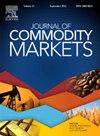对澳大利亚电力市场的极度依赖
IF 4.5
4区 经济学
Q1 BUSINESS, FINANCE
引用次数: 0
摘要
电力市场的波动性明显高于其他可比较的金融或商品市场。极端的价格结果及其在地区间的传导给市场参与者带来了重大风险。我们研究了澳大利亚国家电力市场(NEM)的极端现货价格结果之间的依赖关系。我们使用Davis和Mikosch(2009)以及Davis等人(2011)和Davis等人(2012)开发的极值图研究了单变量和多变量设置中的极值依赖性。我们衡量了个别区域市场中极端价格的持久性,以及极端价格在不同地区之间的传导。通过5分钟和30分钟的价格数据,我们发现,在间歇性可再生能源占比较高的市场中,极端价格更为持久。我们还发现,极端价格的持续存在在更集中的市场中更为普遍。我们还显示,不同地区之间存在显著的极端价格依赖性,在物理上相互关联的市场之间,这种依赖性通常更强。极端价格的依赖结构呈现不对称和时间依赖的模式。应用极值图,我们进一步展示了澳大利亚能源市场委员会2016年重新竞标规则在减少孤立价格飙升份额方面的有效性,这些价格飙升通常被认为是战略竞标的指示。我们的研究结果为市场参与者的对冲决策和决策者提供了重要的信息,他们旨在通过有效的监管来指导市场参与者的交易行为以及改善网络互联来减少市场波动和极端价格结果。本文章由计算机程序翻译,如有差异,请以英文原文为准。
Extremal dependence in Australian electricity markets
Electricity markets are significantly more volatile than other comparable financial or commodity markets. Extreme price outcomes and their transmission between regions pose significant risks for market participants. We examine the dependence between extreme spot price outcomes in the Australian National Electricity Market (NEM). We investigate extremal dependence both in a univariate and multivariate setting, applying the extremogram developed by Davis and Mikosch (2009) and Davis et al., 2011, Davis et al., 2012. We measure the persistence of extreme prices within individual regional markets and the transmission of extreme prices across different regions. With both 5-minute and 30-minute price data, we find that extreme prices are more persistent in the market with a higher share of intermittent renewable energy. We also find that the persistence of extreme prices is more prevalent in more concentrated markets. We also show significant extremal price dependence between different regions, which is typically stronger between physically interconnected markets. The dependence structure of extreme prices shows asymmetric and time-dependent patterns. Applying the extremograms, we further show the effectiveness of the Australian Energy Market Commission’s 2016 rebidding rule with respect to reducing the share of isolated price spikes that are often considered as an indication of strategic bidding. Our results provide important information for the hedging decisions of market participants and for policymakers who aim to reduce market volatility and extreme price outcomes through effective regulations that guide the trading behaviour of market participants as well as improved network interconnections.
求助全文
通过发布文献求助,成功后即可免费获取论文全文。
去求助
来源期刊

Journal of Commodity Markets
Multiple-
CiteScore
5.70
自引率
2.40%
发文量
53
期刊介绍:
The purpose of the journal is also to stimulate international dialog among academics, industry participants, traders, investors, and policymakers with mutual interests in commodity markets. The mandate for the journal is to present ongoing work within commodity economics and finance. Topics can be related to financialization of commodity markets; pricing, hedging, and risk analysis of commodity derivatives; risk premia in commodity markets; real option analysis for commodity project investment and production; portfolio allocation including commodities; forecasting in commodity markets; corporate finance for commodity-exposed corporations; econometric/statistical analysis of commodity markets; organization of commodity markets; regulation of commodity markets; local and global commodity trading; and commodity supply chains. Commodity markets in this context are energy markets (including renewables), metal markets, mineral markets, agricultural markets, livestock and fish markets, markets for weather derivatives, emission markets, shipping markets, water, and related markets. This interdisciplinary and trans-disciplinary journal will cover all commodity markets and is thus relevant for a broad audience. Commodity markets are not only of academic interest but also highly relevant for many practitioners, including asset managers, industrial managers, investment bankers, risk managers, and also policymakers in governments, central banks, and supranational institutions.
 求助内容:
求助内容: 应助结果提醒方式:
应助结果提醒方式:


